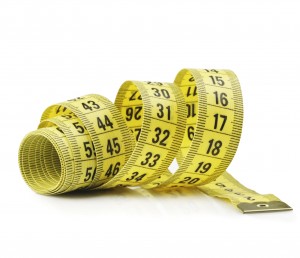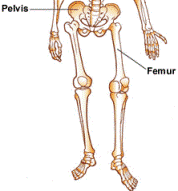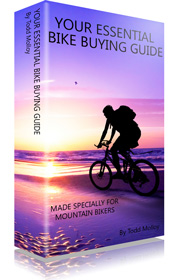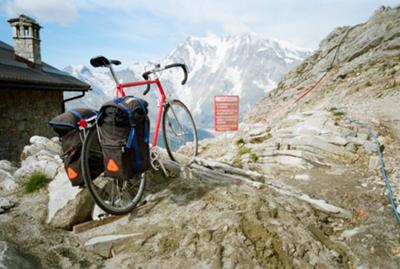Mountain Bike Sizing – Don’t Believe The Charts

Have you seen one of those mountain bike sizing charts?
Depending on where you look there are a lot of hard and fast rules on what size mountain bike you should use.
The problem with these chart and rules are they are based on an average. But what if you have slightly longer arms, or legs, or are a bit taller, or shorter? How do you know if one of these “charts” applies to you? And when you compare 2 charts they are often different!
What follows is the ultimate guide to mountain bike sizing and fitting so you will have the perfect bike size and setup for a comfortable and efficient ride.
 Before you get started on mountain bike fitting, if you missed part 4 of this guide then click to decide if you need a 26″ bike or a 29″ bike.
Before you get started on mountain bike fitting, if you missed part 4 of this guide then click to decide if you need a 26″ bike or a 29″ bike.
Mountain Bike Sizing and Fitting – Why do you need it and how do you do it?
You contact your bike in 3 areas. Your handlebars, your pedals and your seat. The positions of these 3 contacts relative to each other will determine your comfort and efficiency on your bike. When fitting your bike there is a trade off between fitting for fast acceleration and better handling. The two setups will be different, so you need to focus on what matters to you depending on what sort of riding you are doing.
Right let’s get into it. Here are the steps to follow to get the right bike fit and mountain bike sizing:
- Frame Sizing
- Crank Length
- Saddle Tilt
- Saddle Height
- Fore-aft Saddle Position
- Handlebar Position
- Handlebar Width
- Fine Tune Saddle Height
- Frame Size – Again
1. Mountain Bike Sizing – Frame Size
When looking to buy a new bike the big one that people ask is what size bike they should get?
The answer is that you can choose from several different mountain bike frame sizes and still get the same good fit. This will not make sense now so I have moved the section on frame sizing to the end.
If you don’t have the time or patience to read this page then feel free to go out and get whatever mountain bike size your local “expert” tells you to get. While you are there get them to do your ‘mountain bike sizing’ for you. I am sure they will do a great job at adjusting your saddle height! Then you can ride away without the knowledge that your bike doesn’t fit you properly.
If on the other hand you want to be comfortable on your new bike and able to perform at your best then please take the time and read on. It will be well worth the 5 minutes it takes and at the end you will have a bike that is custom fitted to you.
2. Crank Length
Crank length is affected by leg length. A study involving extensive testing found that your crank length should be 18.5% times the distance from the top of your femur to the floor (in bare feet). The top of your femur is 5 – 6” (12 – 15cm) below your hip bone and it moves rearwards when you lift your knee.
A quick way to work this out is to measure from your hip to the floor (in bare feet). Take this length and subract 5 – 6″ (5″ if you are shorter, 6″ if you are taller). Then multiply this distance by 0.185 (18.5%). The resulting value should be your crank length.
This is by no means a hard and fast rule but it should give you a very good starting point. As with all parts of mountain bike fitting if you feel more comfortable or get better power from a slightly longer or shorter crank length then by all means change it.

3. Saddle Tilt
For higher end bikes the saddles tend to be very hard and novice casual riders will find them quite painful after extended use. Because of this people tend to tilt them forward so they are more comfortable. This is not a desirable saddle tilt and you need to get yourself a saddle that will allow your pelvis to rest on a level surface.
For most saddles this would actually make the nose of the saddle a little higher than the rear. The closer you can get to a level platform, the more comfortable you will be and the easier it will be to find your best fore-aft saddle position.
4. Saddle Height
Step 4 of mountain bike fitting is saddle height adjustment. To work out your saddle height, sit on your saddle with one leg hanging free and your hips square. It is important that your hips don’t tilt from side to side.
Put your pedal in line with your seat tube and at the bottom of its stroke. Then set the saddle to the height where your heel can just touch the pedal with a straight leg.
No matter what mountain bike size you have, this should leave some bend in your knee at all times when pedaling. If you ever have a completely straight leg whilst pedaling it will severely reduce your performance and cause you to tilt your hips while riding. This tilting can cause significant discomfort on longer rides.
5. Fore-aft saddle position
Your fore-aft position determines how you are balanced on your bike and your balance determines how comfortable you are and how efficiently you can pedal.
To start with put your saddle in the forward most position that will still allow you to lift your hands off the handlebars and keep your body in the same position without too much effort. You should not feel like you are about to fall forward when you take your hands off your handlebars.
We then come to you handlebar position. There is a limit to how far forward you can comfortably reach to your handlebars while seated. If your saddle is back for balance, your handlebars will need to be slightly back also. However to get more power to the pedals while standing it helps to have the handlebar as far forward as possible.
This is where you will need to make a compromise between comfort and performance. Moving your handlebars forward a small distance can make a big difference when climbing a hill. However this will also mean your saddle will be further forward and that can mean the difference between a comfortable day in the saddle and a sore neck and shoulders.
As you move your saddle forward from the balanced position described earlier, your arms will have to support more weight. However you will be able to position your handlebars further forward for more power. The choice is yours.
6. Handlebar Position
You should now know that having your handlebars further forward will give you more power. This will also give you better aerodynamics and high speed control.
Having a lower handlebar will allow you to pull up more under hard acceleration and again give you better aerodynamics.
If you choose to have the bar closer to you and/or higher up it will be more comfortable but you won’t be able to ride as fast as you are capable.
Most people position their handlebar a couple of inches below their saddle. I suggest that you use the longest reach and lowest position that you still feel comfortable in (with the main focus on comfort). But again experiment and see what position you prefer – even if it is different from bike to bike.
7. Handlebar Width
Handlebar width is a personal choice and a matter of comfort. Most people are happy with their hands about shoulder width apart but experiment with want you prefer and choose what works best for you.
8. Fine tune saddle height
As you go through these adjustments it is a good idea to go back to the beginning and fine tune your saddle height. Remember you should be able to pedal without completely straightening your knees and without rocking your hips from side to side.
If either of these is the case your saddle is too high. Alternatively if your saddle is too low you will soon feel a burning sensation in your thigh muscles because your legs are not working in their most efficient range of motion.
9. Mountain Bike Frame Size – Again
If you made it this far you now know how mountain bike fitting should be done. This means we can revisit the frame size question…
As I said at the start, you can choose from several different frame sizes and still get the same good fit. The reason for this is because stems and seat posts come in lots of different sizes and configurations. Even with different frame sizes you can still get a very good fit customized to you.
That said frame size does have some affect. A longer tope tube will give you a longer wheelbase. This means less jittery handling, better shock absorption and you can use a shorter reach stem. It also means the down tube will be longer and can twist a bit more making the frame not quite as stiff while accelerating so there is a performance downside.
A longer seat tube will let you have higher handlebars with the same stem. This will give you more room for accessories like pumps and water bottles. However it can also stop you from getting your handlebars as low as you want.
A longer seat tube will however increase the height of your top tube and reduce your standover clearance – be careful here and make sure there is plenty of clearance in case you come off the bike.
A lot of these mountain bike sizing and fitting steps need to be done after you have purchased your new bike. But when it comes to getting your right mountain bike size remember that you can get a good fit on nearly any bike size so long as you correctly perform your mountain bike fitting and get the right size parts.
I suggest that you bookmark this page and return here after you have bought your new bike to make sure you set it up for your greatest comfort and performance
Want to Find Your Perfect Bike?

Want to buy a mountain bike? Then you must check out Your Essential Bike Buying Guide. It will take you step-by-step on the process of finding your perfect bike (and saving $$ in the process). Find out more.





